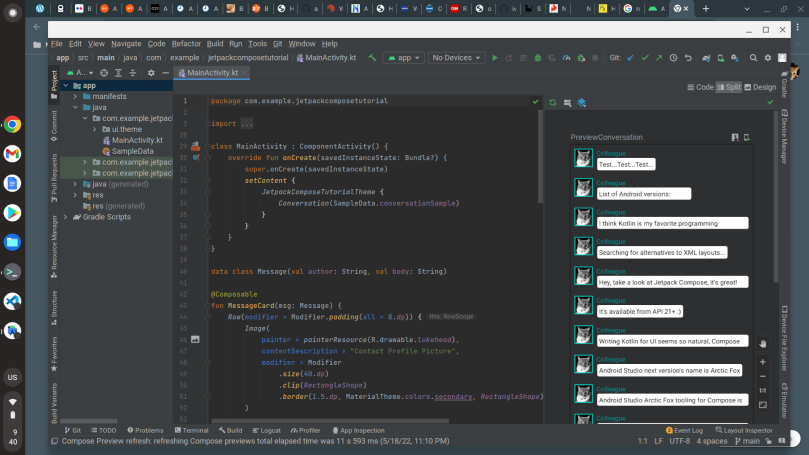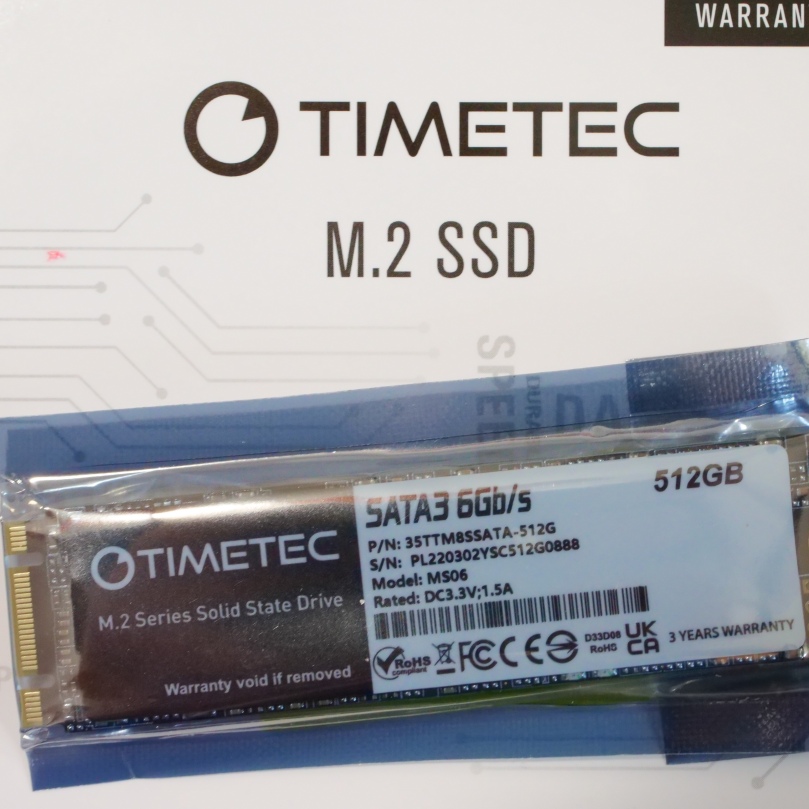
You can indeed install Android Studio (Chipmunk, 2021.2.1) and then run the IDE and actually open a project in it, and have that project build and run inside the IDE. As I wrote earlier I checked this tutorial project I’d built into GitHub. On this Chromebook I checked it out and loaded it into the local Android Studio running on the Chromebook. I had to make a few changes with regards to Java and Gradle because everything is running inside the Chromebook’s Chrostini Linux container. Once that was sorted the project built and I could see the project preview on the far right. I have not tried to kick off a virtual Android device, and frankly, I’m afraid to. Perhaps I should plug in one of my Android handsets I use for testing into the Chromebook’s USB-C port and give that a go. But I have a bigger decision to make.
Should I even try? Loading the project wasn’t a problem. Building it was. It takes a very long time to build this project on my Chromebook, far longer than on my low-end Minus Forum UM250 development box. Developing on the UM250 is reasonable, the Chromebook pushes my patience a bit. Unfortunately if all you have is a Chromebook like this Lenovo, then you go with what you have. I do say that simpler development with Visual Studio Code and Rust or Python is a far better experience than developing with Android Studio.
Having said that, I admit to be very impressed that it all worked as it should on the Chromebook. That speaks to the high quality of Android Studio and Chrome OS itself. For a beginning developer or a developer on a budget, you can get a tremendous amount done with a Lenovo if properly configured up front (Intel i3, 8GB RAM, 128GB SSD storage). For highschool STEM students or undergraduate college students (freshman and sophomore) it’s a great deal. And a Chromebook has all the other tools built-in for doing all the work required of students (writing papers, for example).
Another observation about working on a Chromebook with this Android Studio project is that two project files have been modified; .idea/gradle.xml and .idea/misc.xml. These were changed when I configured the project to work on the Chromebook. Do I check those files into main on GitHub, or do I create a branch for working on ChromeOS and then check them into that branch? Do I even want to bother? Since this was meant to be a proof-of-concept exercise, I’ll need to give that some more thought.


You must be logged in to post a comment.